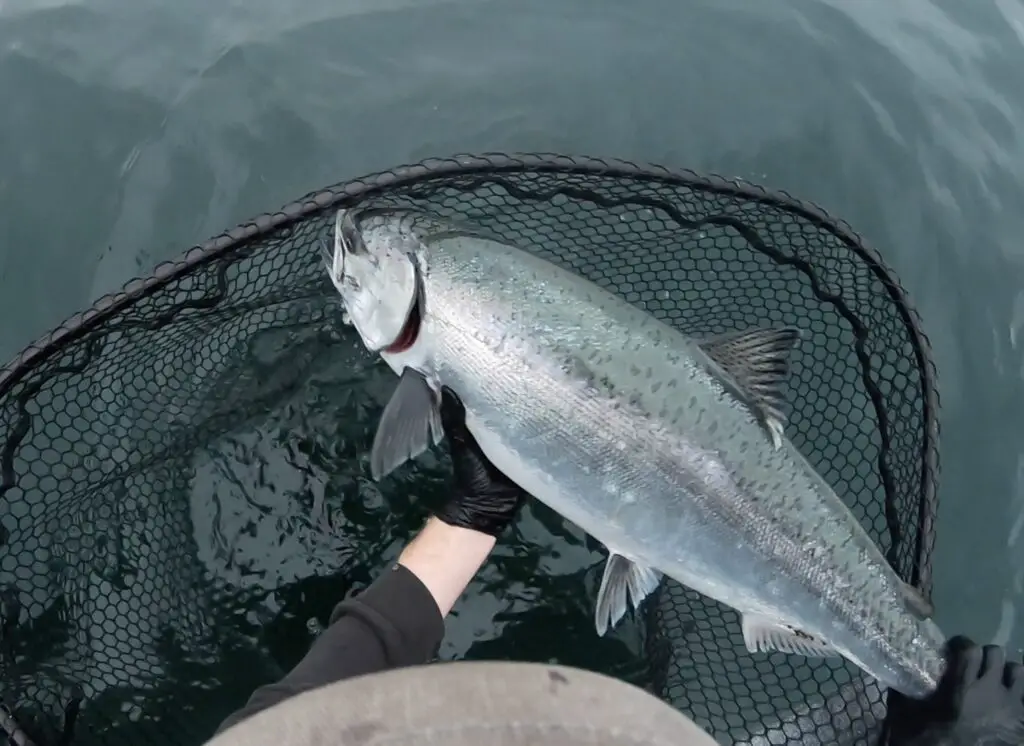
Tired of dragging downrigger balls around and waiting for that bite? Do you only have two downriggers, but frequently take out 3+ people on your boat?
Let’s talk mooching, and more specifically, motor mooching.
One of the most effective and certainly fun ways to catch king salmon from a boat is motor mooching. What is motor mooching? How is it different from mooching? Check out the details here!
Below is a 5 minute video to see the whole technique in action.
Motor mooching is an incredibly simple, yet effective rod-in-hand technique for catching king salmon. Here are the steps:
- Cut plug some herring
- Rig up with mooching sinkers and mooching leaders
- Pick a good spot
- Don’t set the hook when the bite happens!
OK, so what’s the difference between ordinary mooching and motor mooching? Typically, motor mooching is done in much shallower water.
Ordinary mooching requires some current or something to move the boat along so that a good line angle will develop which avoids the tangling that can otherwise occur when using long mooching leaders.
So why use the motor for shallower water? Oftentimes, shallower water has much much less current than the deeper stuff, so you don’t get the boat movement and line angle if you don’t use the motor.
One of the best aspects of shallow water motor mooching is that the biggest king salmon tend to hang out in the rocks and kelp beds in shallower water.
These fish got to their tremendous size by conserving energy and feeding opportunistically. They are not typically schooled up with a bunch of other fish chasing bait everywhere.
So a nice slow-moving presentation like the tight slow spin of a cut plug is just money on these big fish.
Cut plug some herring
One of my pet peeves with fishing is the impression or myth some anglers create, that certain techniques require decades of experience and special skills, and make the difference between success and failure.
It’s not that the skills and experience they’ve acquired aren’t special…far from it. But, it’s overplayed how much of this knowledge is really required for a beginner to go out and have success.
Don’t even get me started on egg cures.
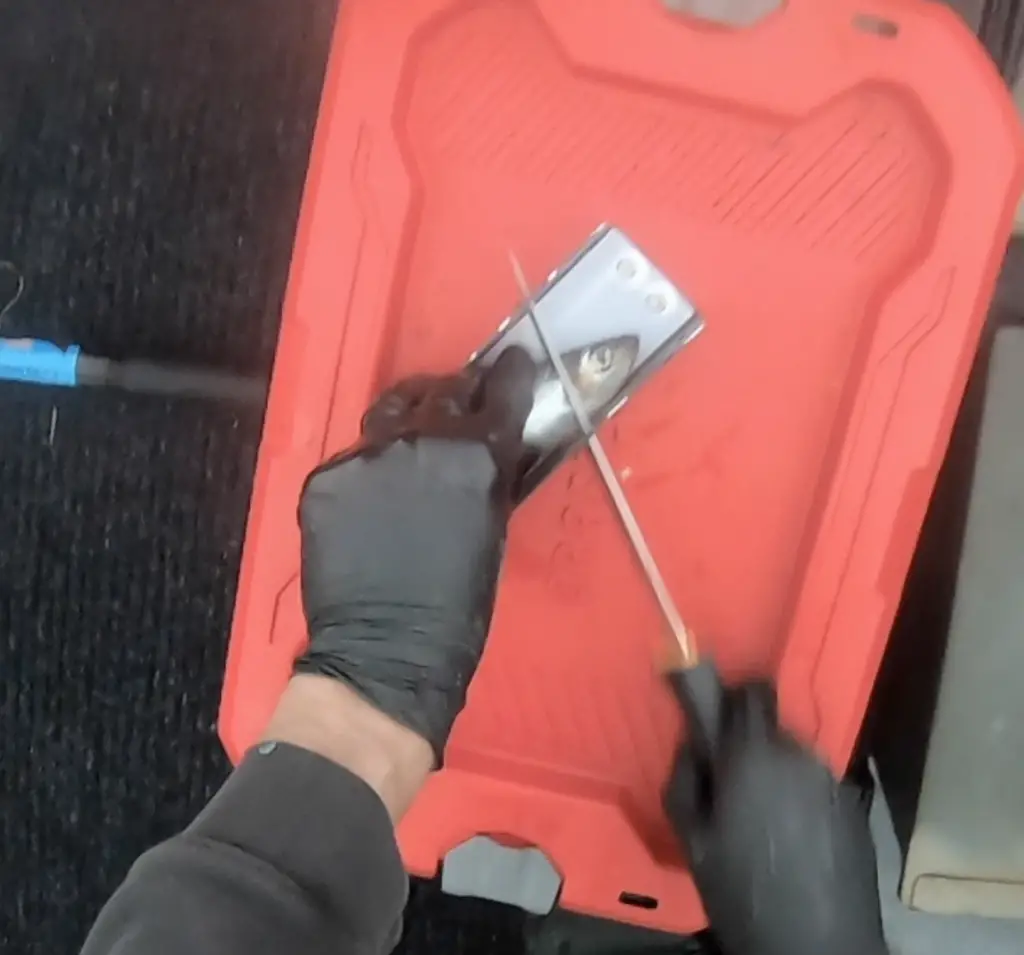
Cut plugging herring is one of those things it took me some time to try because of the fear that I would just waste time on the water learning when I could be dragging a spoon or hoochie around giving me a better chance at success.
I’m glad I did try it because it’s incredibly easy and effective. Anyone can do it.
Get one of these cut plug guide devices and cut plug yourself some herring.
I like to do the cutting with slightly defrosted herring. I use primarily green or blue label but sometimes I will upsize to purple or downsize to red depending on the situation. If you are just looking to go with something solid, you can’t go wrong with blue labels for kings in the summer.
Try to make a single solid cut with a sharp knife vs a sawing motion.
Remove the guts carefully to avoid tearing the edges. Throw 12-24 herring in a container or ziplock with 1 cup of rock salt and 16 oz of water, or enough to cover, let it brine overnight for 12+ hours and you’ve got cut plug herring that will catch fish.
Rigging up with mooching sinkers and mooching leaders
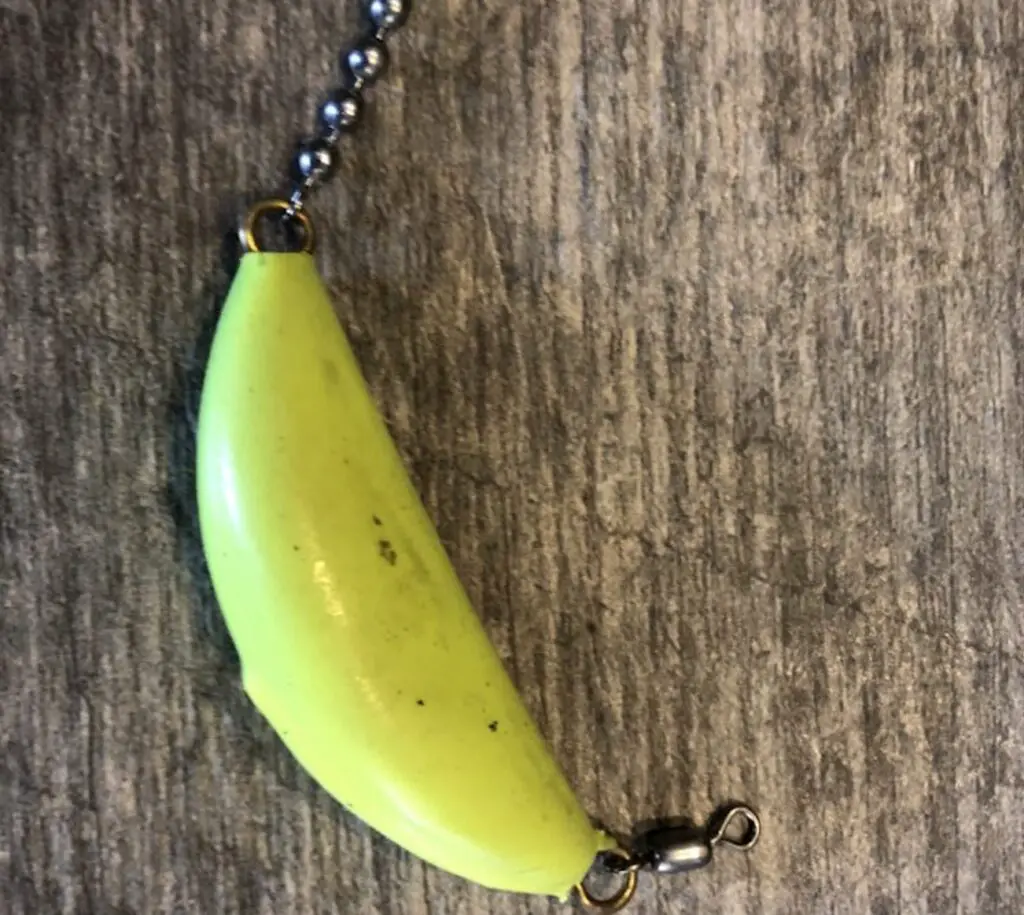
What is a mooching sinker?
Banana-shaped with a bead chain on one side that you tie a 5-7 ft leader to. I like using the painted sinkers in flame orange or chartreuse.
I tie my leaders on a 20 – 25 lb fluorocarbon line.
I generally tie them at around 6 ft in length with Gamakatsu big river bait hooks. You want to match the hook size to the herring size.
For blue labels, I like to use 4/0 – 5/0 for the top hook, and 3/0 for the trailer hook. You also want to match the spacing between the two hooks to the herring size. For me, that’s about a 4-5 finger width of spacing.
Picking a good spot to motor mooch
It’s actually pretty easy to find a motor mooching spot. Let me narrow it down for you: You are looking for water near shore!
Oftentimes, the best motor mooching spots are right next to your typical deep water spots. What makes these deeper water spots good, is that they are typically steep drop-offs and shelves that get bait pushed up against them with strong currents.
That same bait gets pushed into the shallower, also steeply sloped water nearby.
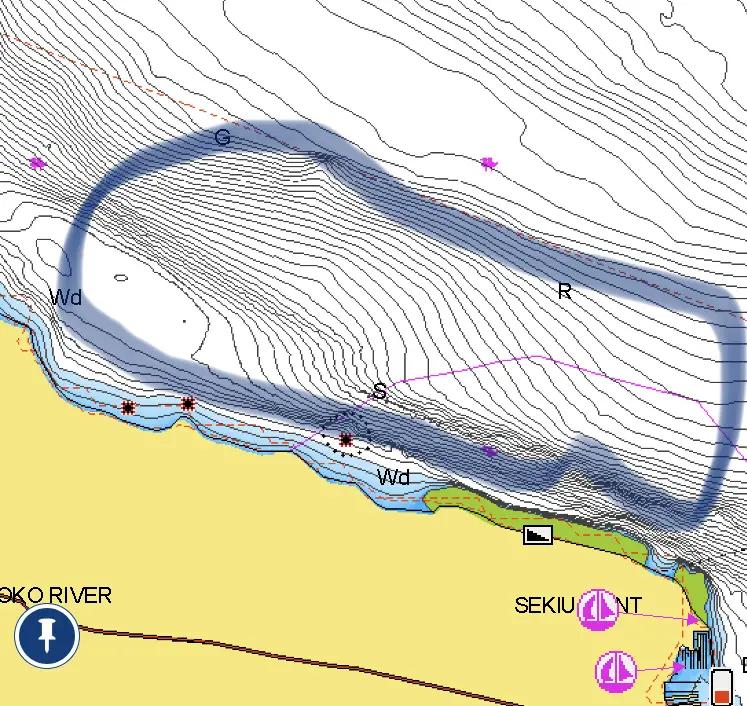
I posted this map in my fishing report on Sekiu in July 2020. This is one of the most famous spots to motor mooch in all of the PNW.
On the same trip, we watched a guy land a 36 lb hatchery king in front of us! The big ones are in the kelp. In the above map, focus on the closer-together bath lines near shore indicating steeper drop off in depth.
This is typically in 20 – 50 ft of water.
There are lots of places like this. The shallower water near points is another option.
Shallower bays that collect bait and drop off to deeper water can also work. I spent some time this morning with a dude who fishes a random beach on Puget Sound and consistently catches king salmon there in the summer.
Why? Because kings love to feed and chase bait in the shallows. You cannot drag 15 lb downrigger balls in 20 ft of water off the beach and expect to have consistent success.
Get to motor mooching!
Hooking up your cut plug herring
WARNING: Requires super secret knowledge of how to put herring on the hook, impossible to master without years of trying and failure first…
NOT!!
Check this out:
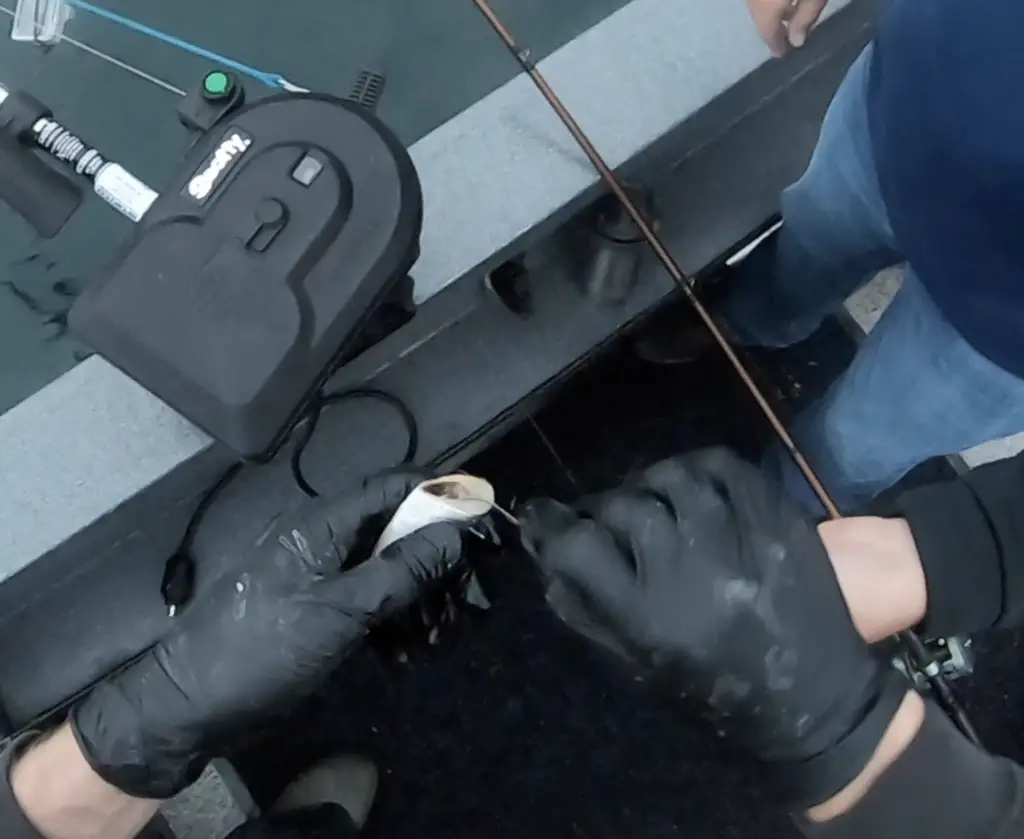
I know, super complex, right? Yes, there are a dozen ways to do this, I’m sure there are better ways…but this way flat-out catches fish.
Storytime: I was out fishing with a master…bait fisherman, eh em. This dude kills it. We were trolling around not getting bit as he talked about how he likes to hook up his herring.
The next time he brought his gear, I was like…”This is how I do it, kind of simple, not as cool as your way, but it seems to work and a guide showed me, as it was his preferred way.”
A few minutes later…his rod goes off.. fish on!. He looked at me. I looked at him.
Now look, I’m not saying my way was better, I’m just saying, that lots of ways work. Keep it simple, especially if you are just getting started.
In general, when it comes to learning new techniques, you want the ONLY variable to be whether the fish decided to show up and bite.
You don’t want it to be things like “Did I do it right, or was my bait good, or blah blah blah”.
Fish with confidence!
Motor mooching technique
Most importantly, you don’t want anyone dropping gear in the water with the motor not in gear.
Unless tangled gear and arts and crafts are your goal. Put the motor in gear, troll about 1-1.2 mph, and start lowering the gear down slowly.
I like it when I can use a line counting reel so I can see the exact depth, but this is not super important when you are in shallow water. Just go down about mid-depth / lower third and you will be fishing.
Most of the time, visibility in the shallows is going to be 10-20 feet anyway.
Your slow-spinning herring will transmit enough flash for fish to spot from a distance. Fish see up not down, so you don’t want to be right on the bottom unless you are trying to find the bottom and come up based on what you see on the sonar.
Another reason to not be right on the bottom is often times there are bottom fish that will tear your bait up in these waters.
You can troll parallel to the kelp beds about 5-20 ft distance from them or you can zig zag your way parallel. Angling the boat away and then towards the kelp as you troll along. The key is to go slooow.
The motor mooching bite
Okay, your rod tip starts twitching, like a trout is nibbling at your bait or something. Time to swing for the fences, right? WRONG!
Salmon typically don’t just inhale baits in one go. They will, like many predatory fish, attempt to strike and stun a fish first, and then come back for the munch munch process.
If you swing and set the hook at the wrong point of this process, you will have nothing but bare hooks to show for it.
So what do you do? What I’ve generally found success with is to reel slowly when the bite starts, this keeps the bait in the zone, keeps it spinning, and allows you to detect when the salmon really takes it as the rod will load up.
As the rod loads up, and you feel contact with the salmon, now reel faster to ensure the hooks get caught somewhere in the salmon.
The salmon will often turn and start to rip out line. There’s no need to set the hook here. The fish is now hooked and the fight is on.
Hooking a big king in shallow water with not much line out is one of the coolest experiences you will have in salmon angling.
The conclusion
This summer, spend some time on the water with the downrigger balls in the tray and mooching sinkers with cut plug herring in the water instead.
Get your maps out, find a good spot, and spend a bit of time with this technique. You will not regret it.